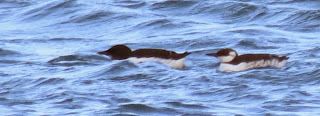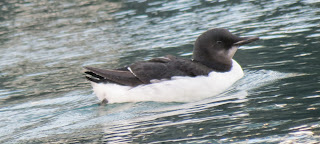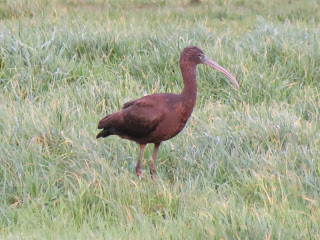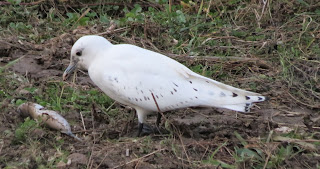This very interesting gull was photographed at Marine Lake this afternoon by Avon birder Paul Bowyer. In every aspect, it seems to resemble a 2nd or 3rd winter NORTH AMERICAN HERRING GULL, with its heavy blotching on the underparts, extensively streaked head and tail pattern.
Dear Lee/All,
While I don't doubt that we could find a few Smiths that look essentially
like this bird, I feel that it would be tough to call it one from a vagrant
European standpoint. The first step is to attempt to age it. I say attempt, as
ringing/banding recoveries in the UK (at least) have shown that 3C birds can
look virtually identical to 2C and 4C (a well-known case from UK where 3 ringed
siblings in their 4CY appeared like 3 different ages!)
However all we can do is look at the features and come up with our best
evaluation. The adult-like inner primaries (incl. P5 with strong white tip) and
most of the secondaries, and obvious mirror of P10 strongly suggest that this is
a 3CY.
Reading the text on this page:
http://gull-research.org/smithsonianus/3cyoct.html
- Lonergan & Mullarney's Smith's ID article at the GRO website
- I find almost no features indicative of smith over argen(tatus/teus)...
The only one would be the heavy dark markings on the head, chest, and neck. But
other features are more indicative of argen, such as:
- no sign of dark marks in the adult-like secondaries
- dark markings in the tail rather diffuse and/or vermiculated
- underside of outer Ps do not seem to show any pale tongues
There are dark marks in the tertials, but from these two images it is not
possible to assess the degree to which they are black and/or sharp - and anyway
I am not convinced that argen cannot show blackish and quite sharp marks in the
tertials on 3CY birds.
So unless the ID features have been refined since the publication of
Lonergan and Mullarney 2004, I don't see how this bird could be called a Smithsonian's from these images.














































































































